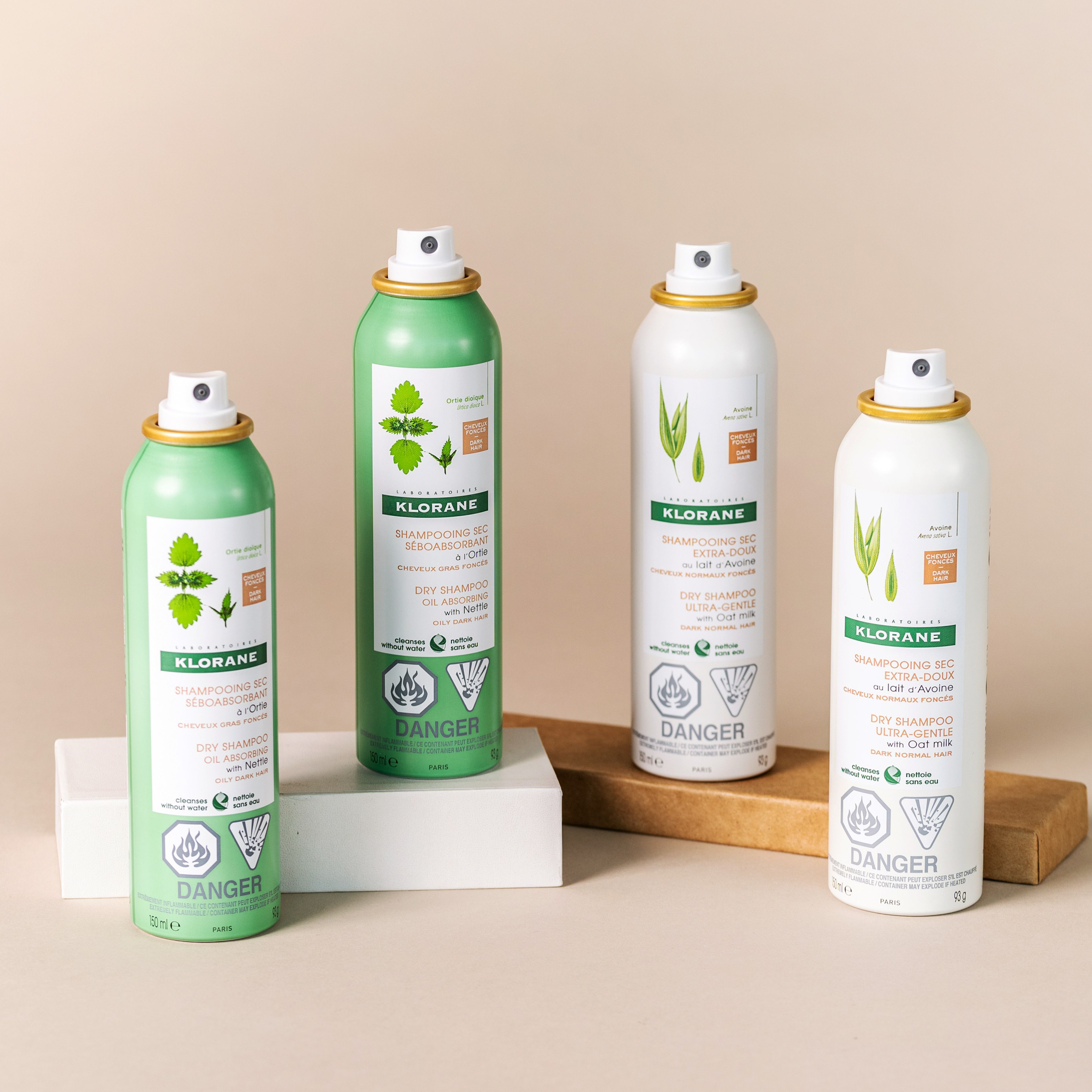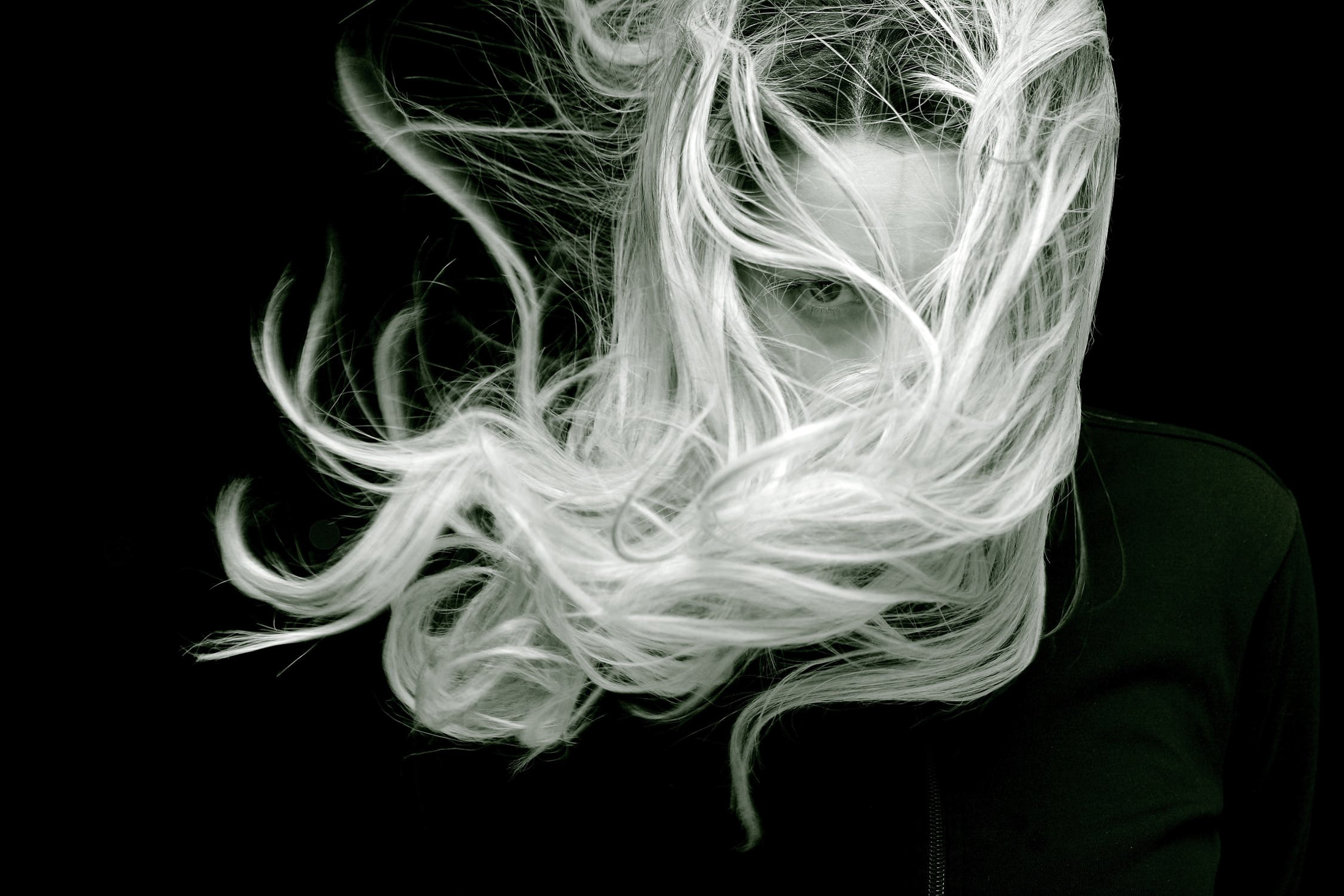Before we were all cooped up inside thanks to a world pandemic, people went out with perfectly coiffed hair. But that was then; this is now. With fewer social engagements and scant offices open, we’re staying in a lot more, and that means it’s the perfect time to test run some dry shampoo. Not only does washing your hair less reduce water consumption (eliminating one wet shampoo a week saves 500 litres a year—a win for the environment), it also means training your hair to stay clean longer (by producing less oil). To boot, these days, we’re all about simplifying life until there’s a COVID-19 vaccine.
There’s something about the French and their magic cure-alls. While not in the same league as the father of vaccination, Louis Pasteur, French beauty brand Klorane makes one of the greatest gifts to the beauty world: dry shampoo with oat milk. In fact, it’s so important to my beauty routine that I’d consider taking it as one of my designated three items to a desert island (and there are zero social engagements on desert islands).
But dry shampoo is nothing new. When bathing was a twice-a-month affair for upper-class Elizabethans, women took to using clay powders to rid their hair of dirt and oil. And in the 18th century, men often used dry powder on both hair and wigs when long locks were a sign of masculine privilege. But in 1965 in the southwest of France, pharmacist Pierre Fabre launched his “one concern, one plant, one benefit” pure botanical beauty brand, with his modern dry shampoo following in 1971, originally designed for new mothers in hospitals (because French women rock savoir faire even after having just given birth).
French pharmacies are hands-down the world’s most revered temples of beauty—located on almost every street corner throughout France and renowned for their simple beauty secrets. It’s no surprise that Klorane’s hypoallergenic and vegan dry shampoo is now one of the world’s best sellers (one is sold around the world every nine seconds).

Image courtesy of Klorane.
I should point out that long before this world pandemic, I was a dry shampoo enthusiast. For decades, I would test run every brand on the market, desperately trying to find that holy grail of lazy morning beauty routines. In my 20s, my sister-in-law shared baby powder as the easiest (and cheapest) of shampoo hacks, but talc’s health concerns shut that habit down a few years ago. I turned to another beauty brand, Batiste (love its Tropical scent), but found it just didn’t have the heft my fine hair needed. Then it was local Vancouver beauty brand Nüla’s Ginger Vanilla dry shampoo—I loved the idea of all-natural cornstarch and kaolin clay but found I had to use multiple handfuls to get any effect. One of my favourites is Balmain’s uber luxurious dry shampoo that perfectly soaks up excess oils and cleanses the scalp, all with a signature Balmain fragrance. But its ungodly price of $56 a bottle meant I’d rather polish it with a rag than actually use it. I’ve had great success with L’Oréal’s Tecni Art Morning After Dust, but it’s only available at salons, which means it’s a destination dry shampoo.
Which brings us to Klorane. From Shoppers Drug Mart to London Drugs and online, it’s available everywhere and runs around $15.50 (it’s on sale right now at Shoppers for $12.99). Its hands-down most effective, powerful blast of natural ingredients (silica, corn and rice starches and cyclodextrin) combat the dirtiest looking hair. I opt for the beige tint, a natural mineral pigment that’s non-colouring and won’t stain your hands, scalp, or clothes. One all-over blast (it also comes in a non-aerosol version in original, oat milk, or nettle) does the trick, and suddenly I’ve gone from limp to luscious in one fell swoop.
Read more in Beauty.









